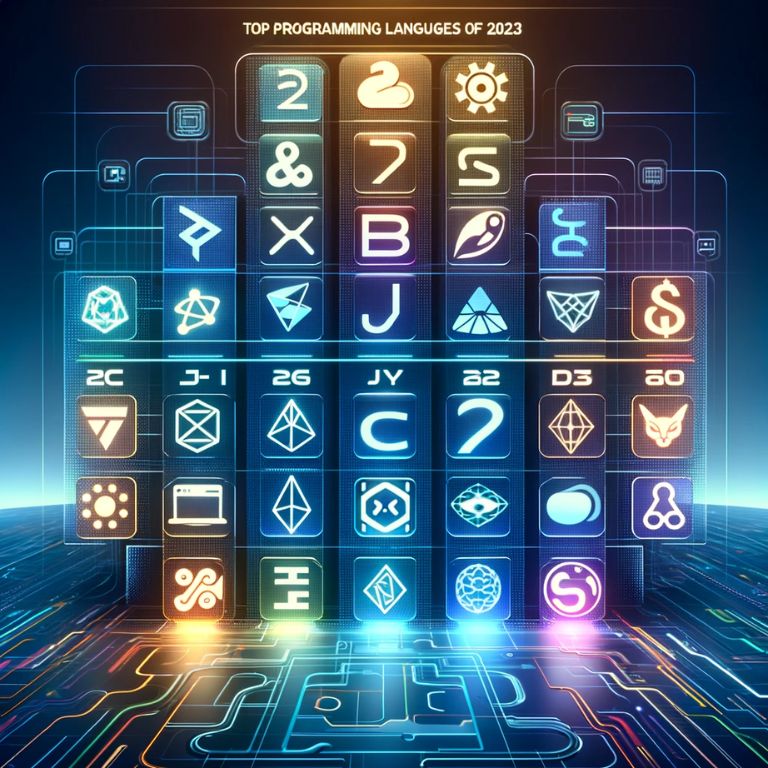In a rapidly evolving tech landscape, programming languages play a pivotal role in shaping the way we develop software, build applications, and solve complex problems. As we venture into the year 2023, it’s crucial to assess the popularity, influence, growth, and relevance of various programming languages. This article dives deep into the world of coding to analyze and rank the top programming languages of 2023, shedding light on their significance in the industry.
Methodology
To determine the top programming languages of 2023, we conducted a comprehensive analysis using a variety of criteria. We considered data from community surveys, job postings, GitHub repositories, and trends in technology adoption. Our methodology aims to provide a holistic view of each language’s position in the programming landscape.
The Top Programming Languages of 2023
- Python
Python continues to dominate as a versatile language with applications in web development, data science, machine learning, and automation.
Its clean syntax and extensive libraries make it a favorite among developers and organizations.
- JavaScript
As the backbone of web development, JavaScript remains indispensable for building interactive and dynamic web applications.
Frameworks like React and Angular contribute to its enduring relevance.
- Rust
Rust’s rise in popularity is attributed to its emphasis on memory safety and performance, making it a preferred choice for systems programming.
It has gained traction in industries like gaming and cybersecurity.
- Kotlin
Kotlin, known for its conciseness and compatibility with Java, has become a go-to language for Android app development.
Its developer-friendly features make it an ideal choice for mobile development.
- Go (Golang)
Go’s simplicity and efficiency continue to attract developers, particularly in cloud-native and microservices-oriented projects.
It offers strong support for concurrent programming.
Popularity and Usage
Our analysis reveals that Python maintains its stronghold in 2023, with a robust developer community and widespread adoption in data science and AI projects. JavaScript remains a staple for web development, with frameworks like React and Angular driving its usage in building modern web applications.
Rust’s popularity surge is notable, with an increasing number of developers appreciating its memory safety guarantees and performance benefits. Kotlin, on the other hand, has solidified its position as the preferred language for Android app development.
Go, also known as Golang, continues to thrive in cloud-native and microservices environments, thanks to its simplicity and efficient concurrency support. These languages are not only popular but also widely used in various domains, making them indispensable tools for developers.
Growth and Trends
Looking at growth patterns, Rust’s rapid ascent stands out, suggesting that it has the potential to disrupt traditional systems programming languages like C and C++. Python and JavaScript maintain steady growth, propelled by their versatility and extensive ecosystems.
Emerging trends include Python’s continued dominance in machine learning and data science, JavaScript’s expansion into server-side development with technologies like Node.js, and Rust’s adoption in security-focused applications.
Relevance in the Industry
The relevance of these languages is closely tied to industry needs. Python remains relevant due to its contribution to data-driven decision-making, while JavaScript’s relevance is inseparable from the ever-evolving web development landscape. Rust, Kotlin, and Go all address specific industry demands, ensuring their continued relevance in their respective niches.
As we navigate the challenges of 2023 and beyond, these programming languages will play a critical role in powering innovation and enabling the development of cutting-edge technologies.
Conclusion
In the dynamic world of programming, staying informed about the top programming languages is essential for developers, organizations, and tech enthusiasts. As we enter 2023, Python, JavaScript, Rust, Kotlin, and Go continue to shape the industry, each playing a crucial role in driving innovation and addressing the unique challenges of the digital era. By adapting to the trends and demands of these languages, professionals and companies can stay at the forefront of technological advancement.




